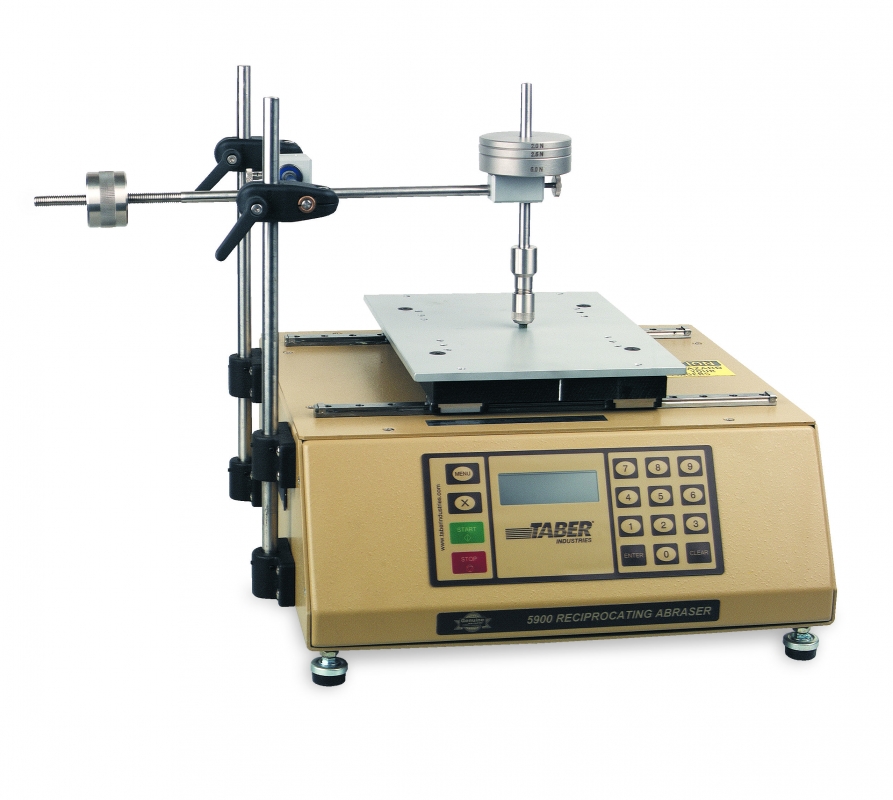Advanced Reciprocating Abrasion Testing
The TABER® Reciprocating Abraser (Abrader) – Model 5900 is a test apparatus similar to the instrument described in test method ISO 1518. Ideal for flat surfaces, this tester can be configured with optional attachments to evaluate the relative resistance or susceptibility of a material surface to physical damage such as wear and abrasion, rub, scratch, mar, gouge, scrape, plus others.
Design and Construction
The Taber Reciprocating Abraser includes a counterbalanced arm which pivots on an adjustable height gantry system. The counterweight allows the user to balance the test arm, ensuring precise test load set-up regardless of the weight of the attachment. Incorporated at the end of the arm is a tool holder to which optional attachments and weights may be secured. A sliding specimen platform moves in a horizontal, reciprocating motion under the stationary tool holder.
Test Parameters
Test parameters such as stroke length (6 – 155mm), speed (3 – 75 cycles per minute) and load (1N – 24N maximum, with included weights of 1N, 2N, 2.5N, 5N, 10N & 24N) are adjustable so optimal settings for each material can be established.
Standard Equipment
The Wearaser® collet assembly comes standard with each Taber Reciprocating Abraser, along with CS-10 and H-18 Wearaser abradants. The size and shape of a pencil eraser, the Wearaser is made using the same high quality Taber abrasive media found in our Genuine Taber abrading wheels. This permits the use of equivalent abrasive materials with the Reciprocating Abraser as well as Taber’s Linear Abraser and the Taber Rotary Platform Abraser.
Specimen Mounting
The standard specimen table provided with the Reciprocating Abraser is 216mm x 278mm (8.5″ x 11″) with drilled tapped holes to accommodate specimen clamps or optional specimen fixing plates. To evaluate most flat specimens, specimen clamps or the optional Wide Slot Fixing Plate may be suitable. For flexible materials such as textile products, the optional Specimen Fixing Plate Kit might be used. Products with a slight contour can also be secured in place using the specimen clamps provided or a custom fixture.
Multi-Test Capability
The Reciprocating Abraser can accommodate two additional test arm kits (sold separately), permitting up to three tests to be performed simultaneously.

